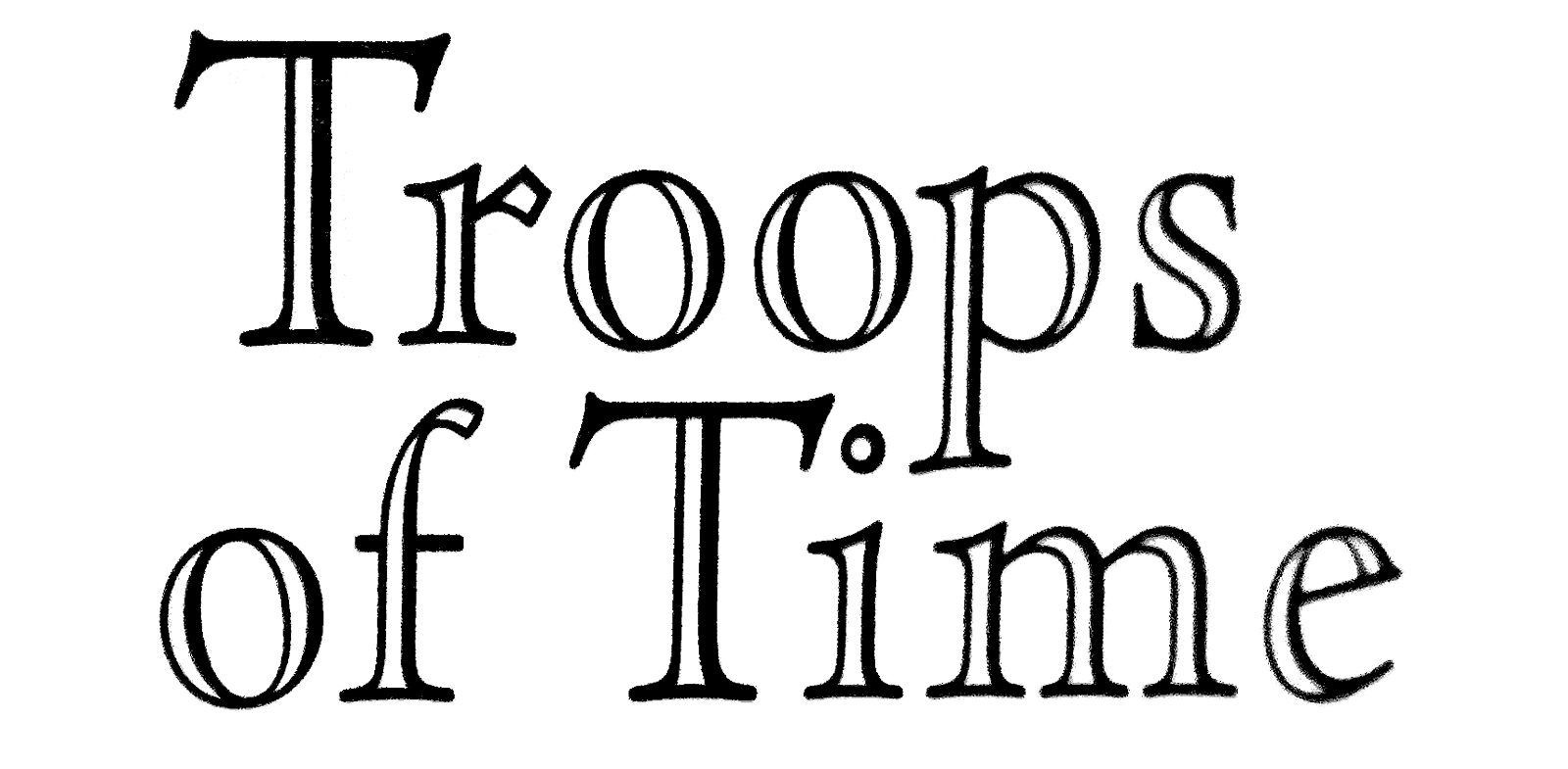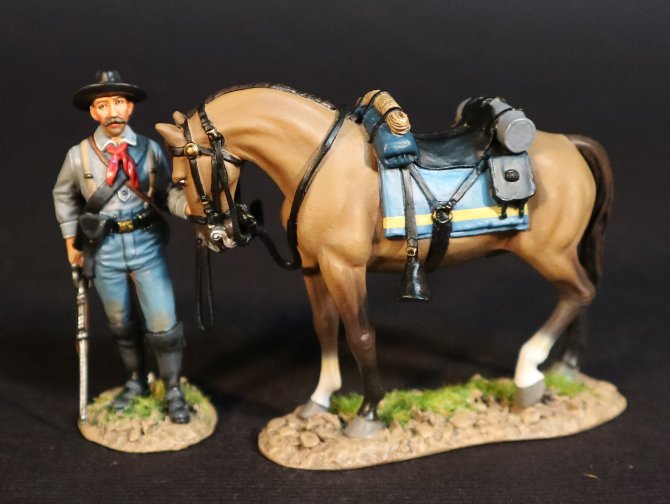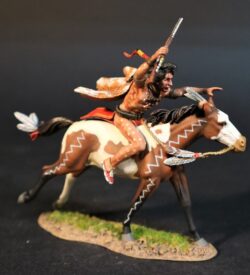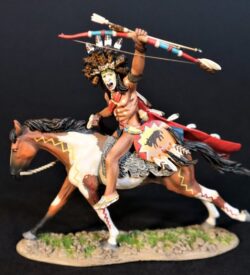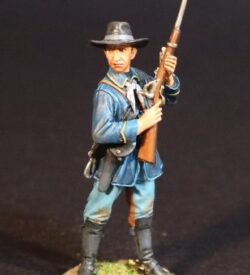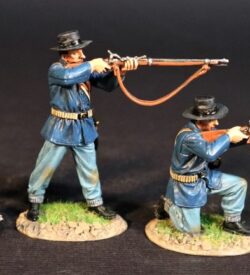RSBUD-04 United States Cavalry Holding Horse, Battle of the Rosebud
$98.00
Description
The US cavalry of 1876 used Lt. Col. Emory Upton’s Cavalry Tactics, which was an unified system of drill, which was compatible among the cavalry, infantry and artillery. This meant an officer could move from one branch of service to another. Upton’s tactics incorporated a “set of fours” as the basic, or smallest, cavalry unit or squad. This was designed to simplify operations, increase speed, and eliminate cumbersome manoeuvres.
Dismounted skirmishing became the main cavalry mode of engagement with the enemy, which facilitated the dispersal of men on a firing line. On campaign and in battle, cavalrymen did not always perform as mounted skirmishers but rather served as mounted infantry. By dismounting and kneeling under fire, the trooper presented a much smaller target for the enemy and could take aim much more accurately.
The preparatory command “to fight on foot”, followed by “As skirmishers”, required each cavalryman to dismount and deploy along a firing line at 5yd intervals, with 15yd gaps between each set of four men.
Odd numbered skirmishers in each set of four fired a round on command and then reloaded as even numbered skirmishers fired on order. Each man then continued to fire roughly in an odd-even sequence without regard to the others until “Cease fire” command was given. Skirmish tactics could be employed by the platoon, company, battalion or even at regimental level.
Dismounted skirmishing required one of every four men, designated as a horse holder, to remain with the horses of the other three. Horse holders retired to a safe position in the rear.
